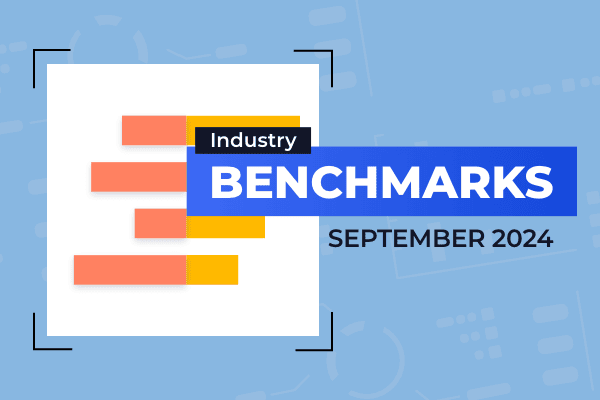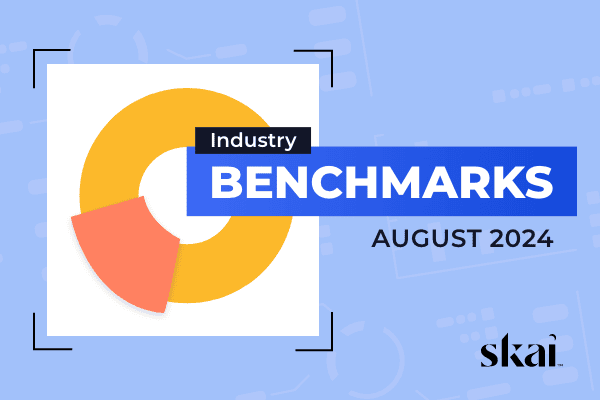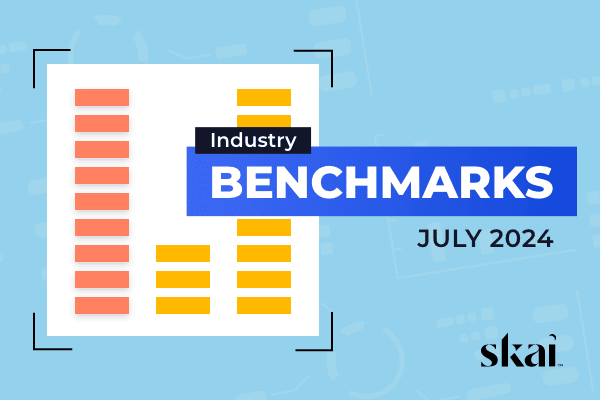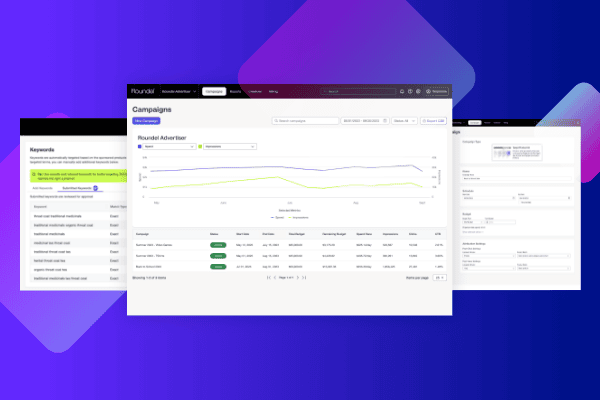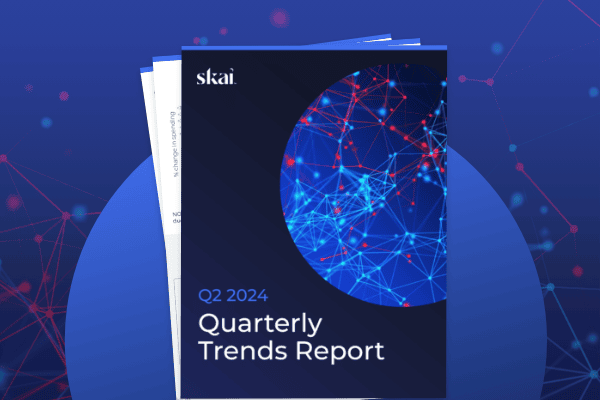Summary
Despite sometimes having higher initial costs than some online channels, the lifetime value of leads from LinkedIn often justifies the investment. LinkedIn also ensures brand safety with strict content standards, making it a reliable, trustworthy advertising platform. B2C brands can also benefit from LinkedIn’s precise targeting capabilities, reaching consumers in a professional context and fostering long-term relationships
LinkedIn has become the digital water cooler in the two decades since its launch in 2003. It’s now the primary place where business professionals from all industries search for jobs, check in on ex-colleagues, and get insights from leaders at 55 million companies worldwide.
As we enter the post-cookie marketing era, LinkedIn will be even more valuable for finding high-quality leads. That’s because LinkedIn has some of the most accurate user data available since most users have posted their entire resume in their profile. While finding highly engaged audiences on LinkedIn takes careful planning and execution, those who get it right usually find the lifetime value of LinkedIn users worth the effort.
However, many brands have yet to truly master the art of LinkedIn marketing. Compared to larger platforms, like Meta, or rapidly growing platforms, like TikTok, it can be difficult to see how a comparatively less flashy, buttoned-down social channel like LinkedIn can fit into content strategy.
Here’s why LinkedIn Ads can be a powerful platform for marketers, along with some tips for getting the most out of your ads.
Exclusive, massive audience
There are one billion worldwide LinkedIn members, including 180 million senior-level influencers, 63 million decision-makers, and 10 million C-level executives.
When it comes to social networking for business professionals, LinkedIn is really the only game in town. Sure, there are other job boards, places for industry leaders to become influencers, and other places for brands to drive home their core mission. Just not all in one package! The combination of all these attributes means that — unlike other optional social media platforms — a LinkedIn presence is a must-have for most businesses and workers.
And there’s also the ethos of LinkedIn itself. While users on other social media platforms are likely there to catch up with friends or decompress with auto-playing videos of baby farm animals, LinkedIn users are there to work (and network). That’s probably why they’re much more open to marketing. According to LinkedIn’s research, their users are six times more likely to convert than users on other platforms.
Unique targeting options
Think of LinkedIn’s targeting capabilities as the power to send a salesperson to the front lobby of a company and ask to speak to everyone from the entire marketing team to the CEO and the interns. That’s the power of LinkedIn’s audience targeting, which allows advertisers to focus on specific companies and employees of those companies, your own contact lists, or retarget segmented audiences based on your first-party data.
Because establishing a LinkedIn presence for career advancement is important for using the platform, LinkedIn has excellent, up-to-date demographic data for most users. Unlike emailing someone from a list that hasn’t been cleaned in years, an employee who may or may not still be with the company, advertising with LinkedIn means you’ll likely serve relevant ads to the right people.
Yes, LinkedIn works for B2C too
Although LinkedIn is often associated with B2B marketing, its paid and organic features can also benefit B2C brands looking to target consumers. It has a significant number of users in the younger generations, who hold the bulk of today’s purchasing power, with almost 60% of its users being between 25 and 34 years old.
With advanced targeting capabilities, B2C marketers can ensure their efforts reach those most likely interested in their products or services. The advanced professional targeting options (title, industry, experience level, etc.) can be used as a proxy for reaching discrete consumer audiences. For example, a luxury car brand may focus on large company VPs and up, who may be most likely able to afford them. A brand may also know through research that people who work in the travel industry are predisposed to buying its products.
LinkedIn enables B2C marketers to start conversations with potential customers and build relationships, leading to increased customer loyalty and a positive brand image. It offers a unique opportunity to reach consumers professionally as part of an omnichannel marketing approach, providing another channel to increase engagement and improve the overall customer experience.
Lifetime value (LTV)
LinkedIn stands out as a premium platform where initial investments might seem steep, especially compared to other channels like Facebook, which boasts a user base that is three times larger and potentially lower cost-per-acquisition (CPA). However, when evaluating LinkedIn ads, it’s crucial to consider each lead’s lifetime value (LTV) rather than just the upfront cost.
Facebook campaigns might generate more leads at a lower CPA, but the real question is: what’s the actual value of these leads? For B2B marketers, LinkedIn’s environment of educated, decision-making professionals offers a unique opportunity. The leads generated here often align more with business objectives, leading to more meaningful and lucrative connections.
Therefore, while the initial cost on LinkedIn might be higher, the LTV of these leads can significantly offset this. It’s important for marketers to assess not only the quantity but the quality of leads from LinkedIn compared to other channels. Before making assumptions based on CPA alone, consider the strategic benefits of cultivating valuable, long-term relationships through LinkedIn.
Brand safety
While many social media platforms face scrutiny over content standards, LinkedIn distinguishes itself by upholding high levels of brand safety, which is crucial for maintaining trust in a professional environment. This commitment is exemplified by LinkedIn’s adherence to the Brand Safety Floor Framework outlined by the Global Alliance for Responsible Media (GARM). This framework, developed with input from across the advertising industry, provides a unified approach to mitigating the risk of ads appearing alongside harmful content, which includes anything from misinformation to inappropriate or sensitive material (ISBA).
LinkedIn’s emphasis on professional conduct within its community further bolsters its position as a safe harbor for advertisers. The platform’s strict community guidelines ensure that all posts, comments, and shared content adhere to a standard befitting its professional audience, drastically reducing the likelihood of brands encountering damaging associations (World Federation of Advertisers).
By prioritizing these standards, LinkedIn sets itself apart as a premium advertising space where businesses can engage confidently, knowing their brand is protected against the pitfalls increasingly common in less regulated platforms.
Tips to improve your LinkedIn Ads
Ready to boost your followers and generate excitement about your brand? Here’s how to take your LinkedIn Ads to the next level.
Know the ad types
LinkedIn offers sponsored content, messaging, and dynamic ads. Content appears in users’ feeds with a small “sponsored” tag. Messaging appears in their inbox and is marked “sponsored.” Dynamic ads offer individualized messaging to highly targeted audiences.
Use them wisely
Sponsored content can be great for all stages of the funnel, but it’s particularly good at helping educate users about your brand. Targeted messaging is a great way to keep the conversation going for product launches, lead gen, and customized event invitations. Because dynamic ads are highly targeted based on profile data, they’re great for remarketing or personalized communication.
Create conversation
LinkedIn is where company leaders go to become thought leaders. LinkedIn posts often provide career tips, business insights, or other advice to enrich the professional lives of other users. Brands should be more than brands on LinkedIn. Create content that does more than showcase your product. Consider what your brand has to contribute to the conversations and invite audiences to interact.
Establish your voice
LinkedIn is a great place to give your blog posts, webinars, events, and emails a second life. Promote content on LinkedIn by creating conversations around it in captions and comments. Engaging directly with your audience in this way increases visibility and enhances your brand’s authenticity and approachability.
Find [and refine] your audience
LinkedIn allows advertisers to target audiences based on job title, industry, company size, seniority level, and your own first-party insights around who has interacted with your brand. You can also create lookalike audiences to target possible leads based on their similarity to current followers and customers.
It may take a few rounds of campaigns to zero in on your best audience definitions. After each campaign, analyze your performance for each audience and find ways to narrow or widen your audience settings based on the data gathered. This iterative approach ensures that you’re constantly improving your targeting strategy, enhancing the relevance and effectiveness of your campaigns over time.
Manage your LinkedIn Ads and so much more with Skai
Skai is the only omnichannel marketing platform for performance advertising. We’re helping marketers connect the walled gardens across retail media, paid search, paid social, and app marketing, making true omnichannel performance marketing a reality. We’ll keep you at the forefront of the digital evolution with data and insights, marketing execution, and measurement tools that work together to drive powerful brand growth. Client results include:
- 461% increase in Amazon Ads ROAS and 57% increase in page traffic for Bondi Sands
- 280% increase in installs for DraftKings
- 10% increase in new account openings for Royal Bank of Canada
- 756% increase in conversions for New York Magazine
- 600% increase in Facebook leads for Inova
For more information, please schedule a brief demo with our team.


